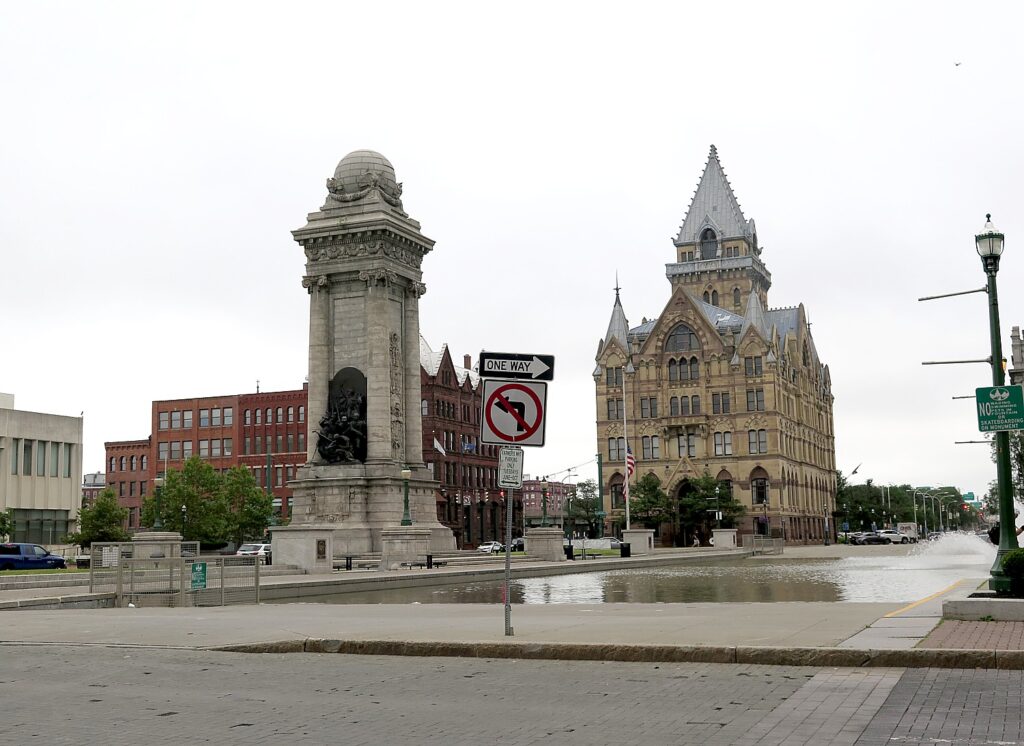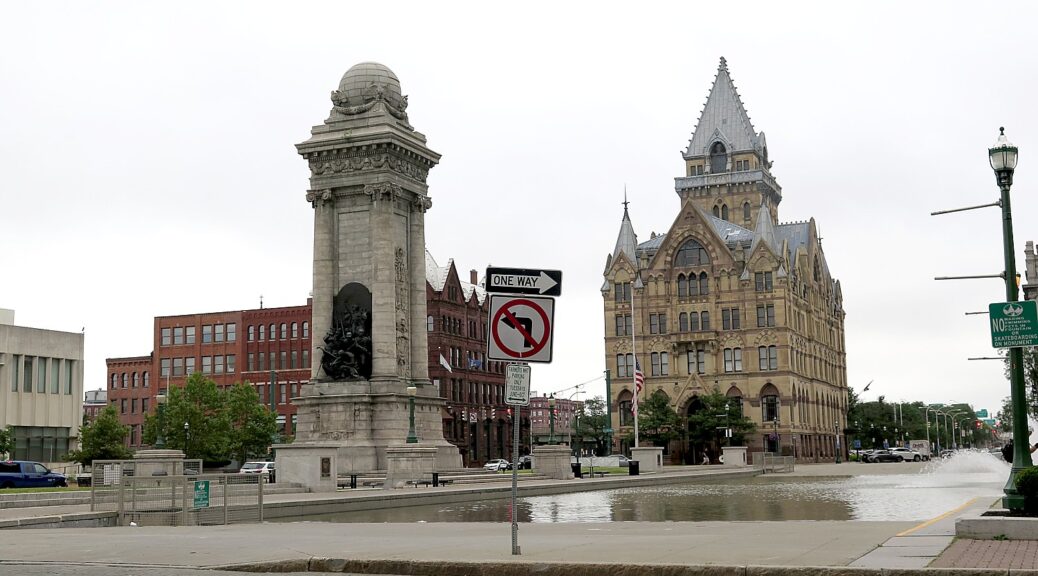
President Biden traveled to Milwaukee, Wisconsin, to announce $3.3 billion to reconnect and rebuild communities in more than 40 states, including those that were divided by transportation infrastructure decades ago and have long been overlooked. These projects will increase access to health care, schools, jobs, places of worship, and other essential services and opportunities, and will strengthen communities by covering highways with public spaces, creating new transit routes, adding sidewalks, bridges, bike lanes, and more.
Coming off President Biden’s State of the Union Address, the announcement is part of the President’s broader vision to rebuild the country’s infrastructure and leave no community behind. To date, the President’s Investing in America agenda has mobilized 47,000 infrastructure projects across the nation and $650 billion in private sector manufacturing and clean energy investments that are revitalizing communities, creating good-paying jobs, and improving the health and safety of families across the country. President Biden is building an economy from the middle out and the bottom up, not the top down – that means investing in all of America to make sure everyone has a fair shot and to ensure a comeback story for thousands of communities.
At its best, transportation infrastructure connects people to opportunity and spurs economic growth. But historically, some of our nation’s infrastructure investments and decisions have done the opposite. The Department of Transportation estimates that at least one million people and businesses were displaced by decades of harmful urban renewal projects and legacy policy decisions in the buildout of the Federal highway system. Highways and rail lines have disproportionately torn through Black and other communities of color and low-income communities, displacing residents and businesses, stifling economic development, and cutting communities off from essentials such as groceries, jobs, transportation, and health care.
Through the Department of Transportation’s first-of-its-kind Reconnecting Communities and Neighborhoods Program, funded by both the Bipartisan Infrastructure Law and the Inflation Reduction Act, the Biden-Harris Administration will help rectify the damage done by past transportation projects and drive economic growth in communities in every corner of the country. This program is a key component of the Administration’s commitment to advancing racial equity and support for underserved communities as defined in President Biden’s executive order. This program also advances the President’s commitment to delivering a convenient, efficient, and clean transportation system, including in proximity to affordable housing. Additionally, this program is a key component of the Administration’s commitment to environmental justice, including to deliver for disadvantaged communities as part of President Biden’s Justice40 Initiative.
In Milwaukee, President Biden will announce $36 million for the 6th Street Complete Streets Project.
In the 1960s, the construction of I-94/I-43 in Milwaukee led to the demolition of roughly 17,000 homes and 1,000 businesses, as neighborhoods in the path of the highway were displaced and surrounding roads like 6th Street were widened to accommodate interstate traffic. This resulted in the creation of a street that prioritized fast-moving car traffic over the people who live, walk, work, and shop in these neighborhoods. The 6th Street Complete Streets Project will reconnect communities along more than two and a half miles of the 6th Street corridor, providing wider sidewalks for children walking to school, safe bike lanes for residents and visitors, dedicated bus lanes for faster transit, new trees to provide shade, and green infrastructure to prevent sewage from flowing into the Milwaukee River and Lake Michigan. These improvements will make the roadway and surrounding communities safer, greener, and more welcoming.
Other projects across the country that will benefit from the funding announced today include the following:
- “The Stitch” in Atlanta, Georgia is receiving $158 million to reconnect midtown to downtown Atlanta. When constructed, I-75 and I-85—now called the Downtown Connector—sliced through Sweet Auburn, cutting it off from Downtown and displacing hundreds of homes and businesses in the working-class neighborhoods. The project will create a 14-acre mixed-use development cap on three-quarters of the Downtown Connector—increasing access to jobs, housing, education, and healthcare and creating public parks, plazas, and surface streets for walking and biking.
- The Chinatown Stitch in Philadelphia, Pennsylvania is receiving $159 million to construct a cap over the Vine Street Expressway in Chinatown, which has been home to a Chinese-American immigrant community since the mid-1800s. The Expressway was constructed in the late 1980s and 1990s, demolishing significant portions of the neighborhood and displacing residents and businesses. The Chinatown Stitch project will cover about two and a half blocks of Expressway, creating new public green space, improving neighborhood connections, and creating equitable mixed-use development opportunities and inclusive mobility options.
- The I-5 Rose Corridor Project in Portland, Oregon, is receiving $450 million to construct a highway cover and a pedestrian and bicycle-only bridge. The project will reconnect the predominantly Black neighborhood of Albina and improve safety and congestion along the interstate corridor with the highest crash rate in the state while supporting new community space and future development.
- The RIVER East Toledo project in Toledo, Ohio is receiving $29 million to reconnect residents of Toledo’s historic east side with the downtown riverfront. Decades of disinvestment and deindustrialization have turned this once thriving working-class immigrant community into one of the city’s most disadvantaged communities, with high poverty rates, heavy environmental burdens, and disproportionate barriers to safe transportation access. This project will make safety improvements along the roadway, add bike and pedestrian infrastructure, and add trees and streetscaping.
- The I-81 Viaduct Project in Syracuse, New York is receiving $180 million to reconnect residents with a community grid that will disperse traffic among a network of neighborhood streets. A key feature of the community grid is the Business Loop, which will connect residents, including residents in low-income housing on either side of Almond Street, with economic opportunities. The project will also add active transportation – including sidewalks, bike paths, new shared use paths, and enhanced and new parks and public spaces – which will further reconnect and reinvigorate the neighborhoods.
- The Reconnecting 4th Ave N. in Birmingham, Alabama, is receiving $15 million to redesign Birmingham’s Black Main Street to convert the one-way road to a two-way road, reconnecting downtown neighborhoods and businesses that were divided by the construction of Interstate 65 in the 1960s. The project encompasses the Historic 4th Avenue Business District, a once thriving hub of Black businesses and community in Birmingham.
- Removing Barriers and Creating Legacy – A Multimodal Approach in Los Angeles County, California is receiving $139 million to create 14 miles of bus priority lanes on four corridors and implement mobility hubs. Los Angeles County has the greatest concentration of roadway fatalities in the nation, with almost double the concentration of fatalities than the second highest county. With the separation of bicycle and pedestrian infrastructure, the project will reduce collisions by up to an estimated 49%. These investments will directly benefit approximately one million disadvantaged Angelenos.
The announcement builds on other investments the Biden-Harris Administration is making through the President’s Investing in America agenda to reconnect communities across the country. In Buffalo, NY, the Administration is investing $56 million to reconnect the east and west sides of the Kensington Expressway, which cuts through a predominantly Black community – adding safe crossing options, investing in green spaces and parks, and attracting new businesses. In Detroit, MI, the Administration is investing $105 million to replace the sunken I-375 that cuts through the prosperous and vibrant Black neighborhoods of Black Bottom and Paradise Valley, replacing it with a new lower-speed boulevard with pedestrian walkways. In New York City, NY, the Administration is investing $150 million to reconnect communities divided by the Cross Bronx Expressway between the Harlem River and the Hutchinson River Parkway, which is one of the most congested stretches of interstate in the U.S. with some of the highest rates of traffic, air pollution, and collisions. And in Pelham, AL, the Administration is investing $42 million to construct a bridge and eliminate two at-grade crossings on Shelby County Road 52 to ensure that stalled or slow trains do not prevent first responders and other vehicles from crossing the city.
In addition to the Reconnecting Communities and Neighborhoods Program, the Biden-Harris Administration has already announced $285 billion in transportation projects across the country, funded by President Biden’s Bipartisan Infrastructure Law. These projects advance equity, improve safety, reduce pollution, and connect communities with jobs, school, and health care, and make it easier for families and loved ones to come together. To date, the Administration has launched local roadway safety projects in over 1,000 communities across the country in cities and rural communities – with a focus on improving safety for cyclists and pedestrians, especially benefitting disadvantaged communities that have been historically left behind. The Administration is also investing $108 billion in public transit – the largest investment in public transit in our nation’s history – benefitting low-income communities that are more likely to rely on public transit for access to jobs, education, and health care.
The Biden-Harris Administration has also invested over $150 million to protect fenceline communities from harmful air pollution, and made available nearly $3 billion via the Environmental and Climate Justice Program at the Environmental Protection Agency to help local organizations engage meaningfully in infrastructure and other investment decisions that impact their communities, increasing access for local voices and participation for historically underserved and overburdened populations

